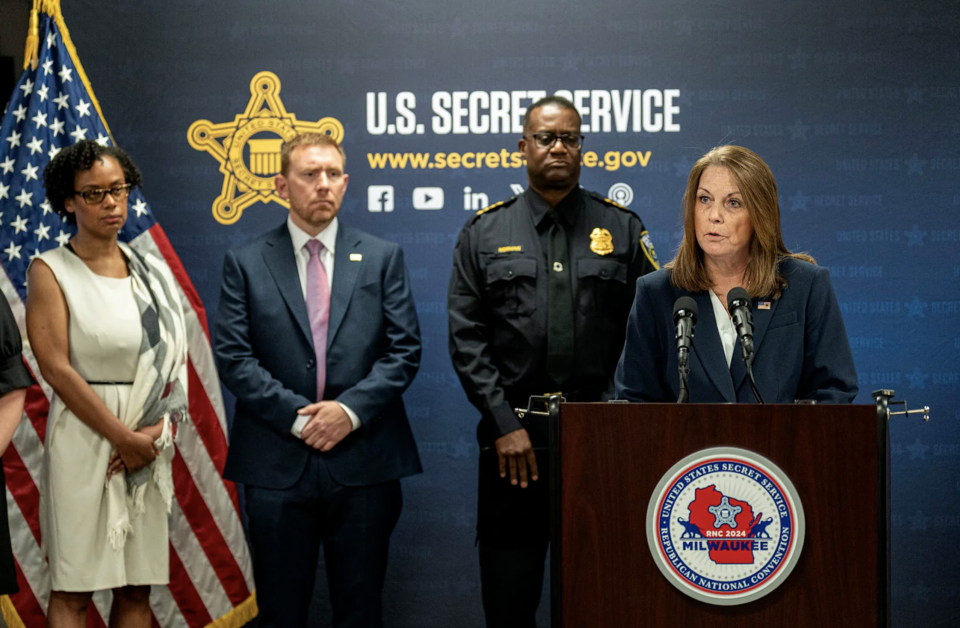The head of the Secret Service has admitted that the shooter who attempted to assassinate former President Trump was flagged as a “potential person of suspicion,” but by the time authorities reached him, he had already opened fire at the rally in Pennsylvania.
Secret Service Director Kimberly Cheatle shared this revelation in an ABC News interview shortly after Fox News Digital reported that a local cop had spotted a suspicious individual with a range-finder 30 minutes before the Saturday assassination attempt in Butler.
The officer, who reported the sighting to state police, took a photo and discussed whether the man was simply using binoculars to get a better view of the rally. Minutes into Trump’s speech, the suspect, Thomas Matthew Crooks, 20, began firing, according to officials.
“The shooter was identified as a potential person of suspicion. Units started responding to seek that individual out,” Cheatle told ABC News. “Unfortunately, with the rapid succession of how things unfolded, by the time that individual was eventually located, they were on the rooftop and able to fire off at the former president.”
Cheatle admitted the responsibility for the security lapse that nearly resulted in Trump’s assassination falls squarely on her shoulders. “The buck stops with me,” Cheatle stated, adding, “This is an event that should have never happened.” She also told ABC News her initial reaction to the shooting was “shock.”
She mentioned that the Secret Service was aware of the security risks posed by the building Crooks used for his sniper position. However, they decided against placing personnel on the roof. “That building in particular has a sloped roof at its highest point. So, there’s a safety factor considered there that we wouldn’t want to put somebody up on a sloped roof. The decision was made to secure the building from inside,” she explained.
Critics argue that this decision was a major oversight, considering the high stakes of protecting a former president. The failure to prevent the attack raises serious questions about the Secret Service’s preparedness and protocols, especially in the volatile political climate.

